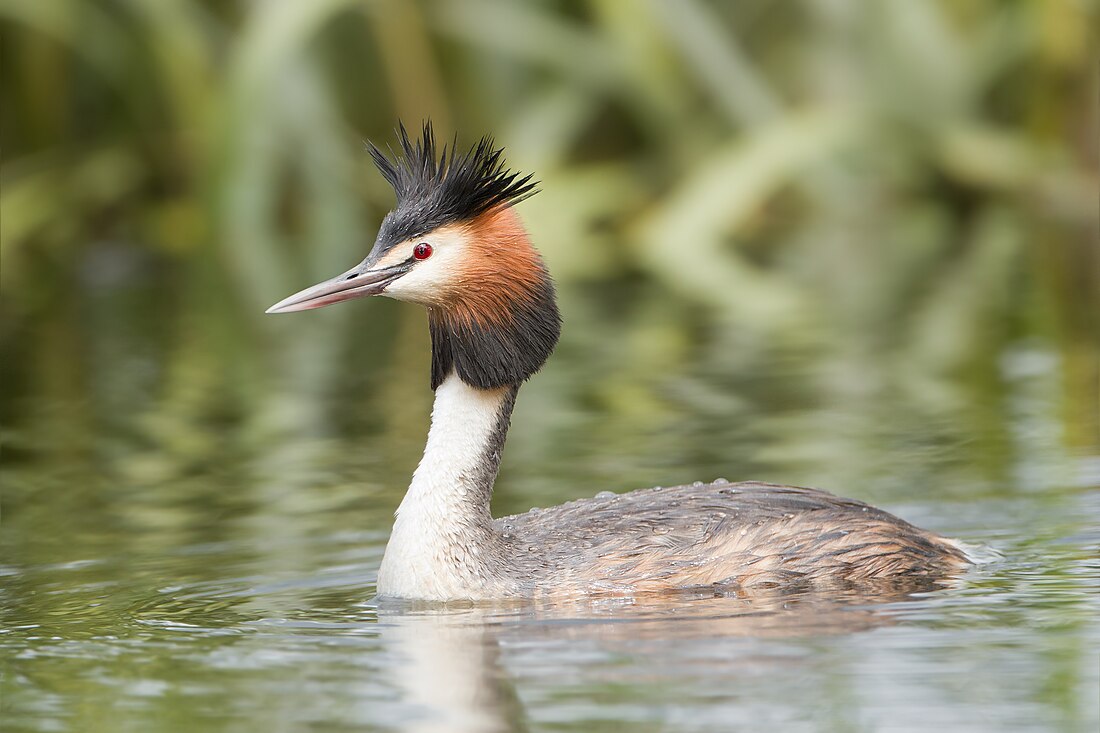The early diversification of the various neoavian groups occurred very rapidly around the Cretaceous–Paleogene extinction event.[8] As a result of the rapid radiation, attempts to resolve their relationships have produced conflicting results, some quite controversial, especially in the earlier studies.[9][11][12] Nevertheless, some recent large phylogenomic studies of Neoaves have led to much progress on defining orders and supraordinal groups within Neoaves. Still, the studies have failed to produce to a consensus on an overall high order topology of these groups.[13][14][15][12] A genomic study of 48 taxa by Jarvis and colleagues in 2014 divided Neoaves into two main clades, Columbea and Passerea, but an analysis of 198 taxa by Prum and colleagues in 2015 recovered different groupings for the earliest split in Neoaves.[13][14] A reanalysis with an extended dataset by Reddy and colleagues in 2017 suggested this was due to the type of sequence data, with coding sequences favouring the Prum topology.[15] The disagreement on topology even with large phylogenomic studies led Alexander Suh in 2016 to propose a hard polytomy of nine clades as the base of Neoaves.[16] An analysis by Houde and colleagues in 2019 recovered Columbea and a reduced hard polytomy of six clades within Passerea.[17]
Despite other disagreements, these studies do agree on a number of supraordinal groups, which Reddy and colleagues in 2017 dubbed the "magnificent seven", which together with three "orphaned orders" make up Neoaves.[15] Significantly, they both include a large waterbird clade (Aequornithes) and a large landbird clade (Telluraves). The groups defined by Reddy and colleagues (2017) are as follows:
- The "magnificent seven" supraordinal clades:
- Telluraves (landbirds)
- Aequornithes (waterbirds)
- Eurypygimorphae (sunbittern, kagu and tropicbirds)
- Otidimorphae (turacos, bustards and cuckoos)
- Strisores (nightjars, swifts, hummingbirds and allies)
- Columbimorphae (mesites, sandgrouse and pigeons)
- Mirandornithes (flamingos and grebes)
- The three orphaned orders:
Comparison of different proposals for neoavian radiation
More information Jarvis et al. (2014) ...
Close
More information Prum et al. (2015) ...
Close
More information Suh (2016) — a hard polytomy ...
Close
More information Reddy et al. (2017) ...
Close
More information Houde et al. (2019) —polytomy in Passerea ...
Close
More information Kuhl et al. (2021) ...
Close
More information Braun & Kimball (2021) — soft polytomies at the base of Neoaves and in Passerea ...
Close
More information Wu et al. (2024) ...
Close
More information Stiller et al (2024) ...
Close
Detailed cladogram
The following cladogram illustrates the proposed relationships between all neoavian bird clades.[21]















